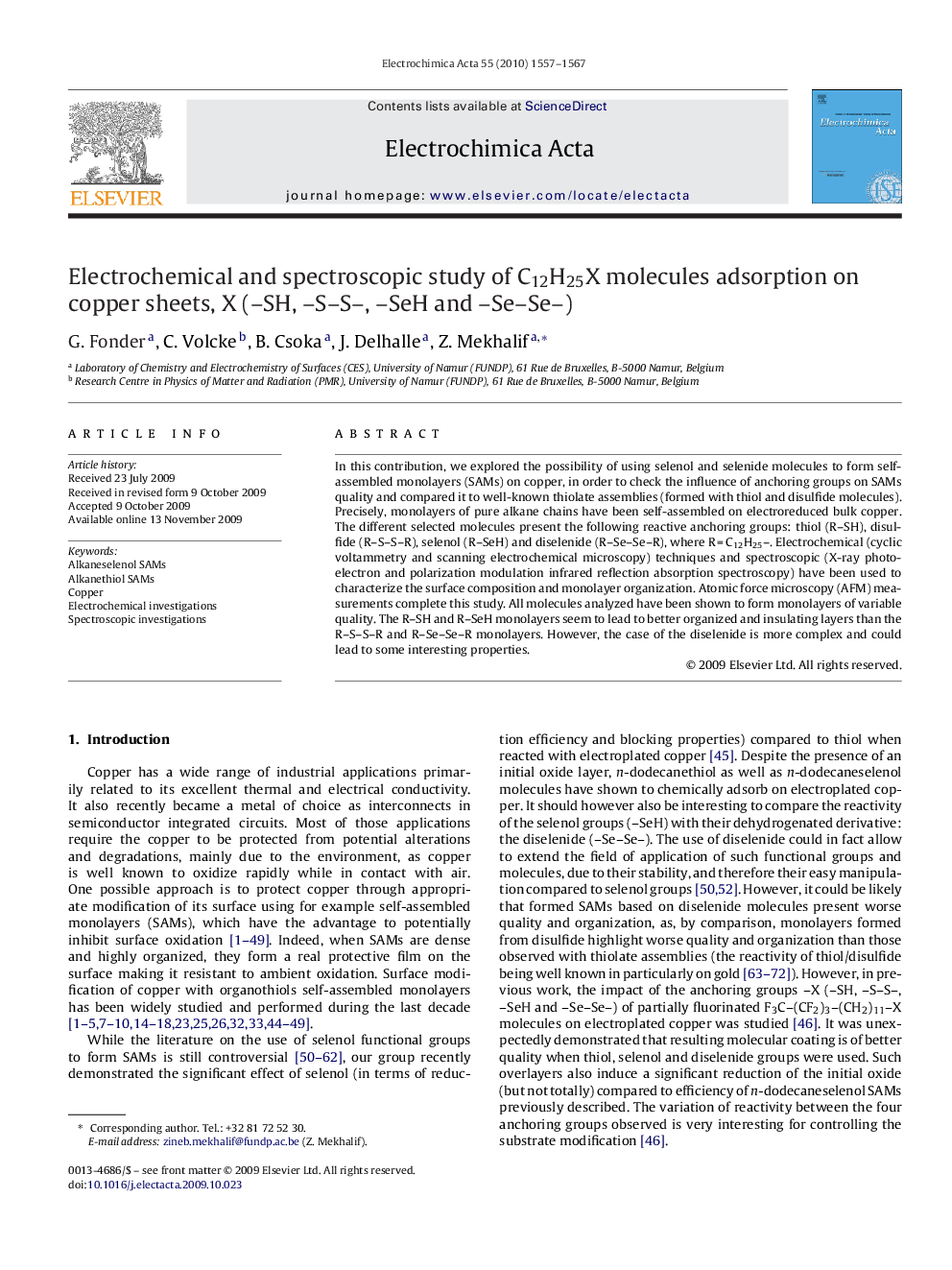| Article ID | Journal | Published Year | Pages | File Type |
|---|---|---|---|---|
| 192072 | Electrochimica Acta | 2010 | 11 Pages |
In this contribution, we explored the possibility of using selenol and selenide molecules to form self-assembled monolayers (SAMs) on copper, in order to check the influence of anchoring groups on SAMs quality and compared it to well-known thiolate assemblies (formed with thiol and disulfide molecules). Precisely, monolayers of pure alkane chains have been self-assembled on electroreduced bulk copper. The different selected molecules present the following reactive anchoring groups: thiol (R–SH), disulfide (R–S–S–R), selenol (R–SeH) and diselenide (R–Se–Se–R), where R = C12H25–. Electrochemical (cyclic voltammetry and scanning electrochemical microscopy) techniques and spectroscopic (X-ray photoelectron and polarization modulation infrared reflection absorption spectroscopy) have been used to characterize the surface composition and monolayer organization. Atomic force microscopy (AFM) measurements complete this study. All molecules analyzed have been shown to form monolayers of variable quality. The R–SH and R–SeH monolayers seem to lead to better organized and insulating layers than the R–S–S–R and R–Se–Se–R monolayers. However, the case of the diselenide is more complex and could lead to some interesting properties.
